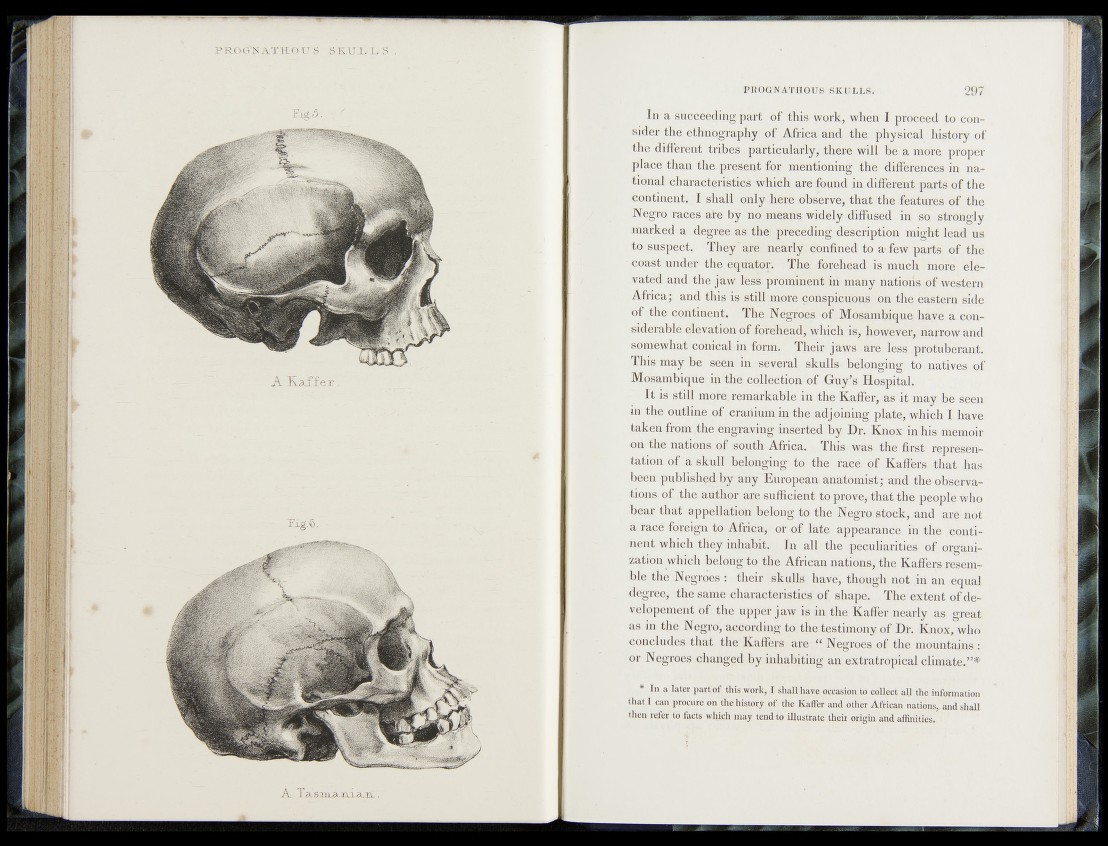
A Kaf fer
ï'ig.ô
A_ latama-ixiaaL.
PKOGNATHOTJS SKULLS. 297
In a succeeding part of this work, when I proceed to con-,
sider the ethnography, of Africa and the physical history of
the different tribes. particularly, there will be a more proper
place than the présent for mentioning the differences in national
characteristics which areiound indifferent parts of the
co ntinent I shall only here tobserve, that the features of the
Negro races are by no means widely diffused in so, strongly
marked a d e g r e e s the' preceding description might lead us
to 'suspect*. They*,ate- nearly^c:orifmed> to a* few parts, of the
©oast under -tha equator; The*, forehead is much more elevated
an d -d ^ ^w ^ e fs,p r e n n e n t in many nations p f western
Africa j and this is still m o re cM ^ ip ^ ^ s -,on the eastern side
of the continent. The Negroes b-f+Mbsambiq-ua have a considerable
»éfovàion ofifofehead, which is,v howeyer, narrow and
seteewhati conical-in form-. Their jaws. are ,d éss. protuberant.
Thismay he seep in ^Several skulls- bplonging^jk) natives of
Mosambique. ih^thd.collection of Guy’s Hospital.-.
It instill more, remarkable in the Kaffe%,as'it may be seen
in the outline of cranium in the adjoining plate, which I have
taken from the engraving inserted by Dr. Knox in his . memoir
on the?nations of south Africa. This w a a th e first represent
■i^bn of à skull'belonging- to the race of Kaffers that has
been published, by any European anatomist,*; and theo’bserva-
-tions %f, the author axe sufficient to prove, that the people who
bear that appellation belong .to the Negro stock, and are'not
a race foreign to Africa, or of late appearance||h the Continent
which they inhabit. In all the peculiarities -of organization
which belon'g ,to the African nations, the Kaffers resemble
the Negroes : their ,skulls have, though not .in an equal
degree,: the same characteristic's', pf^shape. , The extent.of;de>
velopement of the upper jaw is in the Kaffer nearly as great
as in the Negro, according to the testimony of Dr. Knox, who
concludes that the Kaffers are*t( Negroes of the mountains :
or Negroes changed by inhabiting an extratropical climate.”*
* In a later part of this ,work, I shall have occasion to collect all the information
that I can procure on the history of the Kaffer and other African nations,'and shall
then refer to facts which may tend to "illustrate their origin and affinities.
m